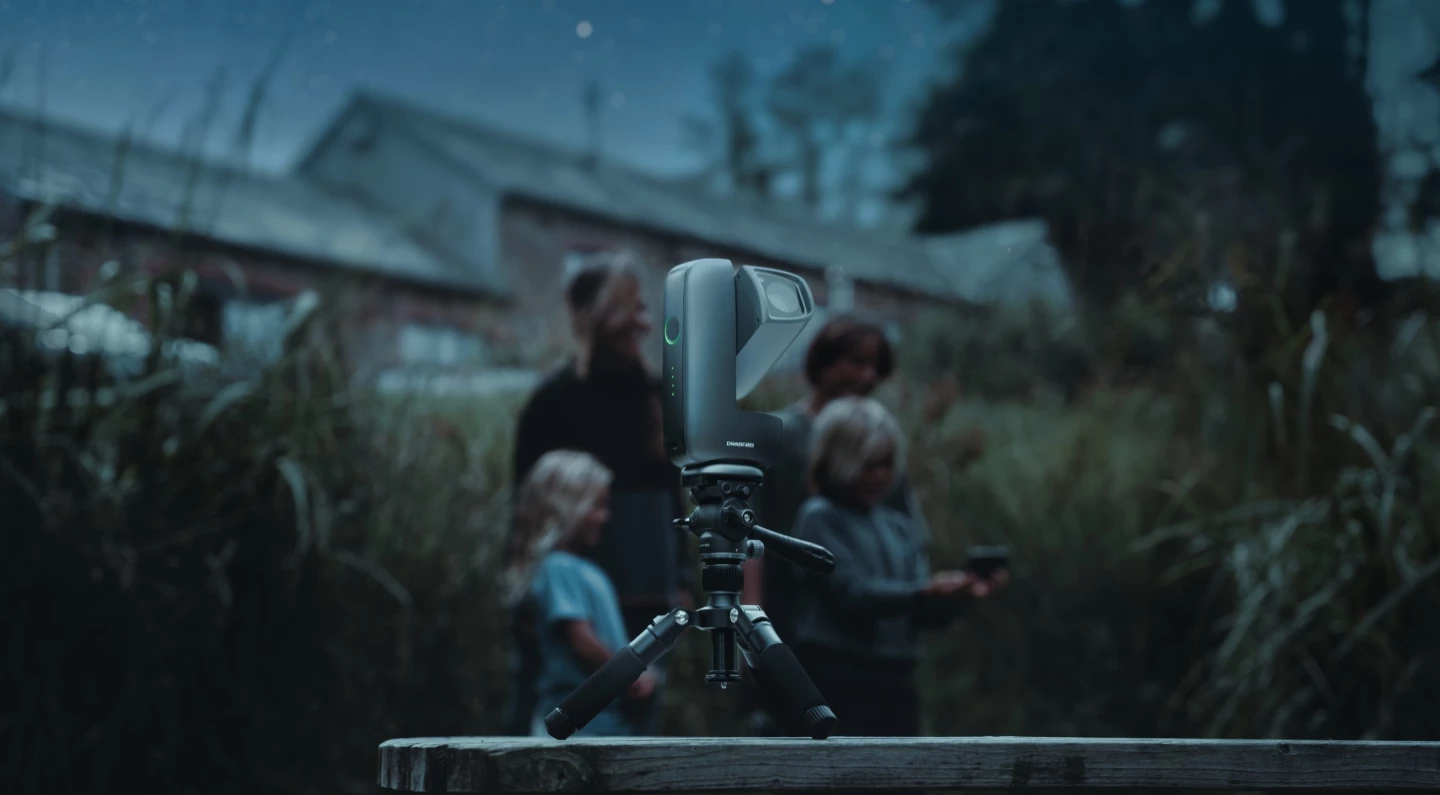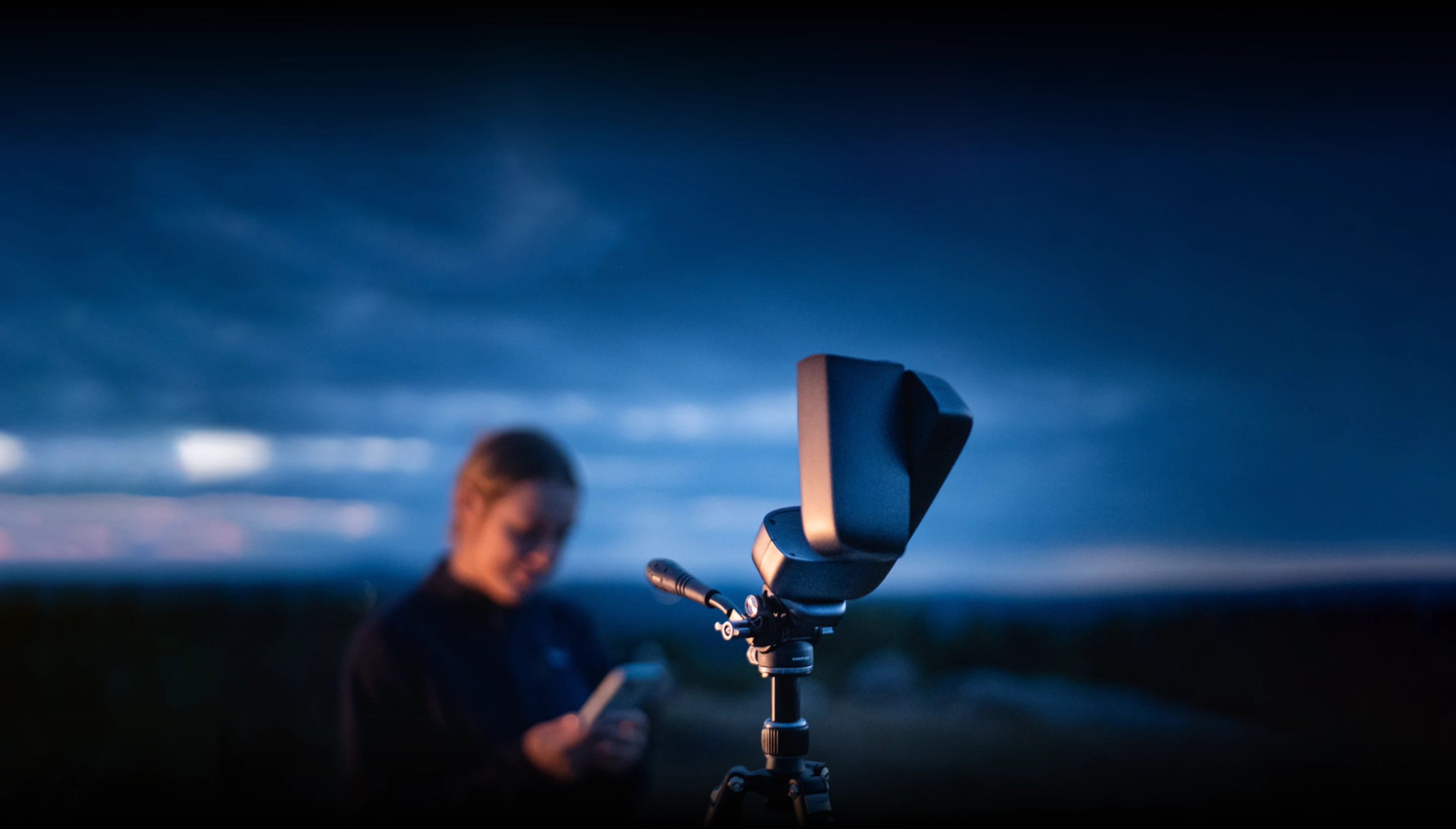Photographing the deep sky at night can be a complicated business involving specialist knowledge, expensive and bulky equipment and a good deal of patience. DwarfLab's book-sized smart telescopes have removed many pain points over the years, but the company has gone lightweight as well as compact and portable for its latest design.
First things first, the Dwarf III I reviewed earlier this year tipped the scales at 1.35 kg (2.97 lb) – not exactly heavy but no featherweight either. The Dwarf mini comes in at 840 g (1.85 lb), and also ditches the now familiar book shape for something straight out of the Vaonis cookbook – albeit much smaller and lighter.
That means instead of the cylindrical "spine" housing the optics, such things pop and tilt from the main body to point skyward. This motorized lens barrel can rotate over 225 degrees, while the motorized base that the unit sits on can pan a full 360. As before, budding stargazers don't get closer to galaxies and nebulae through an eyepiece, that sort of thing is handled by the smart part of this equation.

At the heart of this little beast is a Sony IMX662 imaging sensor for the 30-mm aperture telephoto optics plus an OS02K10 sensor for 3.4-mm wide-angle lens. The tele is reported to have an equivalent focal length of 1,016 mm and sports built-in filters for astro, dark and dual-band imaging. The wide lens supports astro mode only – and there's no mention of the device being capable of capturing daytime pano shots of the landscape or bringing twitchers closer to birds. This is 100% for astrophotography.
The Dwarf mini is controlled and setup using a companion app running on a smartphone. Bluetooth 5.0 and dual-band Wi-Fi are baked in. Celestial targets can be selected from a Sky Atlas through the app, and the smart telescope then auto locates and tracks the deep space objects. Once fixed on a target the user sets shooting parameters and starts the image stacking process.
I found it quite mesmerizing to watch a distant object become more and more visible on the smartphone screen as the image stack number increased, but this can be a lengthy process so others may prefer to set things up and leave the Dwarf mini to do its thing. Though the device won't be able to get up close to planets in our solar system, shots of our Moon are possible and the telescope ships with a ND filter for Sun captures too.

The 7,000-mAh internal battery is reckoned good for 4 hours in astro mode before needing to cable to a power source via USB-C. You won't be able to set and forget in a field overnight, but a portable battery bank that delivers at least 22 watts could help make extended sessions a possibility. If not, a full top-up is said to take around 100 minutes.
I was actually quite pleased with the deep sky results during my admittedly limited testing of the Dwarf III, though imagery was significantly improved with a touch of parameter tweaking through editing software. DwarfLab is promising "breathtaking detail of the Moon's craters, distant galaxies, vibrant nebulae, and the arc of our own Milky Way" from the new model too.
The Dwarf mini smart telescope is up for pre-order now priced at US$399 (though a 10% discount is currently applied at checkout). Shipping is estimated to begin from December.
Product page: Dwarf mini









